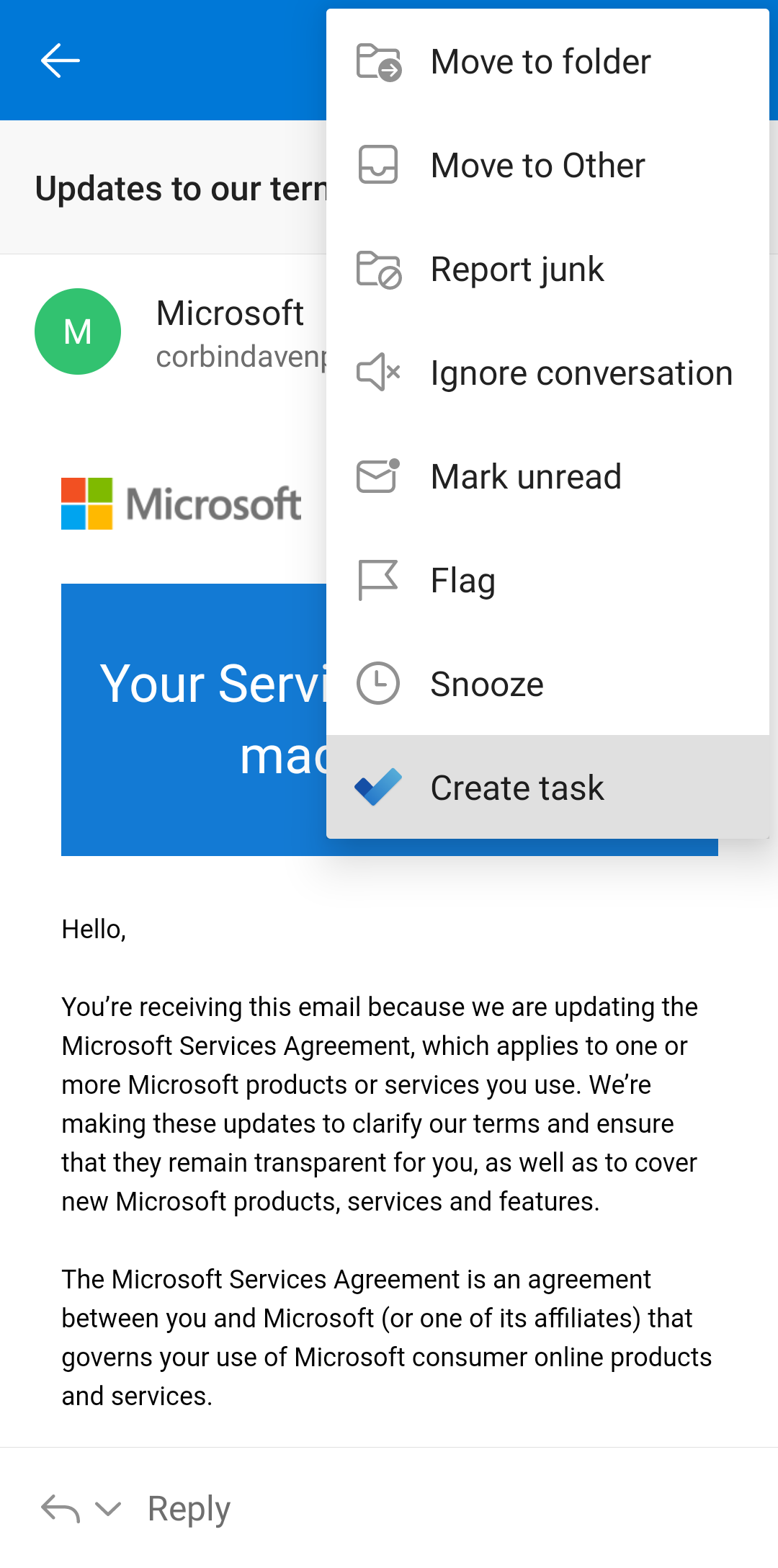I’ve been using Outlook since forever and I remember that I used to be able to create Desktop shortcuts to Outlook folders simply by dragging a folder out of Outlook and onto my Desktop (or any other folder in Explorer). This allowed me to quickly go to or open Outlook in a specific folder.
Many people keep a list of things to do — on paper, in a spreadsheet, or by using a combination of paper and electronic methods. In Outlook, you can combine your various lists into one list, enhanced with reminders and tracking. The Do not AutoArchive this item property is selected for a given item. To check this, open the item in a new window, click File Properties, and remove a tick from this checkbox: You can also add the Do Not AutoArchive field to your Outlook view to get an overview of items for which this option is selected. Archive folder is missing in Outlook. To do so, follow the steps below: Press Windows key and R. Type in outlook /safe and click OK. Click on File and select Options. Whether you use Microsoft Outlook for your work email or personal email, you likely spend a lot of time each day on email. These comprehensive Microsoft Outlook tutorials will show you how to get the most from your email system. Understanding what your Outlook email system can do is the first step to saving time and working more effectively.
When I try do this now, my mouse pointer turns into a blocked shield.
Is it still possible to create Desktop shortcuts to specific Outlook folders in another way?
These type of shortcuts are xnk-files and support for creating these shortcuts was officially dropped in Outlook 2007 but existing xnk-shortcuts could then be still revived via a Registry key. Outlook 2010 and later no longer provide support for xnk-files at all.
However, you can still create a Desktop shortcut to a specific folder in Outlook by using the /select command line switch.
Creating a shortcut with the /select command line switch
The example below shows you how to create a Desktop shortcut to the Calendar folder in Outlook.
- Create a new Outlook shortcut:
- Windows 7
Type outlook in the Search field of the Start Menu. Right click on it and choose; Send To-> Desktop (create shortcut) - Windows 8 and Windows 10
Typeoutlook.exein the Search field or Start Menu. Right click on it and choose: Open file location. In the File Explorer window that opens, right click onOUTLOOK.EXEand choose; Send To-> Desktop (create shortcut).
For full instructions and alternative methods see: Creating an Outlook Desktop shortcut in Windows 8 or Windows 10
- Windows 7
- Right-click the shortcut you just created, and from the shortcut menu click Properties.
- On the Shortcut tab, locate the Target box. It contains the path for Outlook.exe.
- Press the SPACEBAR once to type a space after the path, and then type;
/select outlook:calendar- For Outlook 2016 (MSI) 32-bit on a 64-bit version of Windows, the full command should now look like this;
'C:Program Files (x86)Microsoft OfficeOffice16Outlook.exe' /select outlook:calendar - For an Outlook 2016 (C2R), Outlook 2019 and Microsoft 365 installation of Outlook 64-bit, the full command should now look like this;
'C:Program FilesMicrosoft OfficerootOffice16Outlook.exe' /select outlook:calendar
- For Outlook 2016 (MSI) 32-bit on a 64-bit version of Windows, the full command should now look like this;
- Click OK.
- On the desktop, double-click the Outlook shortcut you created and it should now open the Calendar folder in Outlook.
Creating a custom shortcut with the command line to start
Outlook in the Calendar folder.

Outlook To Do List Vs Task List
How to specify a folder

Specifying a folder quite easy, but there are a couple of things to note:
- If the folder is in the main mailbox, simply type the name.
Example:/select outlook:calendar - If the folder contains spaces, contain it in quotes.
Example:/select 'outlook:Sent Items' - If the folder is a subfolder, separate by a forward slash (/).
Example:/select outlook:Inbox/Newsletters - If the folder is in a different mailbox, you’ll need to precede the folder name with 2 forward slashes and specify the name of that mailbox as shown in the Navigation Pane.
Example:/select outlook://Archive/Inbox

If you want to create a Desktop shortcut to your corporate Public Folders, you can combine the above set of rules in the following way;
/select 'outlook://Public Folders - youraddress@company.com/All Public Folders'
Extra tip:
If you do not want to open the folder in a new Outlook window, you can add the /recycle switch as well. The Microsoft 365 example would then become;'C:Program FilesMicrosoft OfficerootOffice16Outlook.exe' /select outlook:calendar /recycle
Changing the shortcut icon
When you create the Desktop shortcut, it will have the default Outlook icon. You can change the icon to match it with the folder type it points to in the following way;
- Right click on the Desktop shortcut and choose Properties.
- Select the Shortcut tab.
- Press the button: Change Icon…
- Select the icon of choice.
- Press OK.
Outlook To-do Bar Calendar
Select a different icon for your custom Outlook shortcut.
Note:
For more command line switches to use with Outlook see the guide: Command line switches for Outlook 365, 2019, 2016, 2013, 2010 and previous
I’ve got an additional account in Outlook which I share with someone else. We often flag emails for each other which then show up in the To-Do Bar as well were it mixes with my own tasks and flagged mails.
I tried to disable this mailbox from displaying reminders in the To-Do Bar but that option appears not to be available.
Is there a way to only show tasks and reminders from emails in my personal mailbox and not from another?
The option “Display reminders and tasks from this folder in the To-Do Bar” is indeed not available for Exchange mailboxes or pst-files which have a mail account associated with it. In other words; it only applies to additional pst-files and archives.

To still be able to control which account/mailbox shows its tasks and flagged messages in the To-Do Bar, you can apply an account filter to the To-Do Bar view.
Note: This method can also be applied to the To-Do List in the Tasks Navigation.
Applying an account filter to the To-Do Bar
- In your Account Settings, lookup the exact account name of your main account or the one that you want to filter out. Remember this name or write it down as you’ll need it later.
- Open the View Settings dialog for the To-Do Bar;
- Outlook 2007
Click on the “Arranged By:” column header in the To-Do Bar and choose Custom… - Outlook 2010 and Outlook 2013
Click on the “Arrange By:” column header in the To-Do Bar and choose View Settings…
Opening the View Settings for the To-Do List.
- Outlook 2007
- In the View Settings dialog that pops-up choose Filter…-> tab Advanced
- Here you can add the following criteria to filter out a specific account;
- Field:
E-mail Account - Condition:
doesn’t contain - Value:
<Additional Account Name>
Or, if you have multiple accounts and really want to only show your tasks and flagged items from you main account;- Field:
E-mail Account - Condition:
is (exactly) - Value:
<Main Account Name>
- Field:
- Press the button “Add to List” to apply the filter.
- Press OK and then OK again close the open dialogs.
Add Calendar Pane To Outlook
Type in the criteria and press the “Add to List” button to apply the filter.
